Evolutionary Ecology
The department of Evolutionary Ecology gathers complementary skills in behavioural ecology, population dynamics, population biology, community ecology, and methodology (statistics and modelling). The research done in the department aims at studying how animal species evolve in a changing world by understanding the causes of the evolution of traits, adaptations and interactions. For that, we consider different levels of organization from individuals to populations and communities. Because organisms cannot be considered isolated from other biotic factors, we consider pathogens but also competing species within communities.
We study how individuals adapt to their environments that are largely impacted by anthropic pressures, and how life history traits and behaviour evolve in response to these pressures. Although we mainly focus on phenotype, we more and more consider the mechanistic link between the genotype and the phenotype. We develop the theoretical framework of our discipline through a conceptual and modeling approach. In parallel, we test hypotheses that arise from theoretical predictions through experimental, comparative and observational approaches on different biological models (insects, birds, mammals). Experimental approaches are developed in the laboratory (insect model) and in natura (bird, insect and mammal models). Observational and comparative research is mainly concerned with vertebrates. Our approaches are also, and increasingly, interested in the mechanisms of adaptive responses. In addition to the classical approaches of demographic analysis and trait change, methods of ecophysiology, chemical ecology and molecular biology are used.
Our department hosts several long-term studies of wild populations of different species. These long-term studies offer a valuable way to understand how biotic and abiotic factors affect individuals’ life history traits, and the functioning of populations in natura. Five populations of mammalian species are thus monitored for several years (more than 40 years on roe deer, 30 on Alpine marmots, 25 years on cats, 16 years on zebras, and 20 years on impala). Two of our study sites (La Sassière in Vanoise National Park (Alpine marmots) and Hwange National Park) have been certified as “Site d’Etude en Ecologie Globale” (SEEG), and two (ZA “Hwange” and ZA “Antarctic and sub-Antarctic”) were certified as “Zone Atelier” by the CNRS.
The department of Evolutionary ecology is also largely involved in training activities. Lastly, we also have strong socio-economic relationships. Indeed, because we address questions of major societal interest (global warming, public health) we tightly collaborate with socio-economic partners (Office Français de la Biodiversité, Vanoise National Park, Hwange National Park in Zimbabwe, Office National des Forêts, etc.) and participate to general public and media events.
Publications
Display of 2191 to 2220 publications on 2449 in total
Microspatial genetic heterogeneity and gene flow in stray cats (Felis catus L.): a comparison of coat colour and microsatellite loci
Molecular Ecology . 12 : 1669-1674
Journal article
see the publicationWhen to use public information for breeding habitat selection? The role of environmental predictability and density dependence
Animal Behaviour . 66 : 973-988
Journal article
see the publicationGathering public information and habitat selection: prospecting birds cue on parental activity
Proceedings of the Royal Society B: Biological Sciences . 270 : 1809-1813
Journal article
see the publicationConsistency between ordination techniques and diversity measurements: two alternative strategies for species occurrence data
Ecology . 84 : 242-251
Journal article
see the publicationMultivariate analysis of incomplete mapped data
Transactions in GIS . 7 : 411-422
Journal article
see the publicationBroad-scale biodiversity pattern of the endemic tree flora of the Western Ghats (India) using canonical correlation analysis of herbarium records
Ecography . 26 : 429-444
Journal article
see the publicationSex-ratio variation and reproductive costs in relation to density in a forest dwelling population of red deer (Cervus elaphus).
Behavioral Ecology . 14 : 862-869
Journal article
see the publicationMicrospatial structure of Drosophila melanogaster populations in Brazzaville: evidence of natural selection acting on morphometrical traits
Heredity . 91 : 440-447
Journal article
see the publicationGenetic variability of sexual size dimorphism in a natural population of Drosophila melanogaster: an isofemale-line approach
Journal of Genetics . 82 ( 3 ) : 79-88
DOI: 10.1007/BF02715810
Journal article
see the publicationMorphometrical evolution in a Drosophila clade: the Drosophila obscura group
Journal of Zoological Systematics and Evolutionary Research . 41 : 64-71
Journal article
see the publicationThe fly that came in from the cold: geographic variation of recovery time from low-temperature exposure in Drosophila subobscura
Functional Ecology . 17 : 425-430
Journal article
see the publicationEvolution of reaction norms In Phenotypic plasticity : functional and conceptual approaches
incollection . 4 : 50-63
Journal article
see the publicationIntegrated databanks access and sequence/structure analysis services at the PBIL.
Nucleic Acids Research . 31 ( 13 ) : 3393-3399
DOI: 10.1093/nar/gkg530
Journal article
see the publicationRelationship between spatial and genetic distance in Agrobacterium spp. in 1 cubic centimeter of soil.
Applied and Environmental Microbiology . 69 : 1482-1487
Journal article
see the publicationUse of Correspondence Discriminant Analysis to predict the subcellular location of bacterial proteins
Computer Methods and Programs in Biomedicine . 70 : 99-105
Journal article
see the publicationComparing and classifying one-dimensional spatial patterns: an application to laser altimeter profiles.
Remote Sensing of Environment . 85 : 453-462
Journal article
see the publicationUn site web pour l'enseignement inter-disciplinaire des Mathématiques en Biologie
Environnements Informatiques pour l'Apprentissage Humain 2003 . http://atief.org ; http://www.inrp.fr : 445-452
Conference paper
see the publicationPuumala hantavirus infection in humans and in the reservoir host Ardennes region France
Emerging Infectious Diseases . 8 : 1509-1511
Journal article
see the publicationGeminy: software for testing the effects of genotyping errors and multitubes approach for the individual identification
Molecular Ecology Notes . 2 : 83-86
Journal article
see the publicationStratégies comportementales et modèle d'optimisation dynamique à horizon non fini : succession des constructions de toiles chez une araignée orbitèle "Zygiella X-Notata" (Clerck)
Thesis
see the publicationRelationships between Staphylococcus aureus genetic background, virulence factors, agr groups (alleles), and human disease
Infection and Immunity . 70 ( 2 ) : 631-641
Journal article
see the publicationRelationships between Staphylococcus aureus genetic background virulence factors agr groups (alleles) and human disease.
Infection and Immunity . 70 : 631-641
Journal article
see the publicationInteractions between ectomycorrhizal symbiosis and fluorescent pseudomonads on Acacia holosericea: isolation of mycorrhiza helper bacteria (MHB) from a Soudano-Sahelian soil
FEMS Microbiology Ecology . 41 : 37-46
Journal article
see the publicationUsing aggregation methods to assess toxicant effects on population dynamics in spatial systems
Ecological Applications . 12 : 1771-1784
Journal article
see the publicationWhat is the relevance of obtaining multiple blood samples for culture? A comprehensive model to optimize the strategy for diagnosing bacteremia
Clinical Infectious Diseases . 35 ( 7 ) : 842-850
DOI: 10.1086/342383
Journal article
see the publicationBet-hedging for variability in life cycle duration: bigger and later-emerging chestnut weevils have increased probability of a prolonged diapause
Oecologia . 132 : 167-174
Journal article
see the publicationIntraspecific competition between healthy and parasitized hosts in a host parasitoid system: consequences for life-history traits.
Ecological Entomology . 27 : 415-423
Journal article
see the publicationThe mating system of feral cats (Felis catus L.) in a sub-Antarctic environment
Polar Biology . 25 : 838-842
Journal article
see the publicationCosts of reproduction: assessing responses to brood size manipulation on life-history and behavioural traits using multi-state capture-recapture models
Journal of Applied Statistics . 29 : 407-423
Journal article
see the publicationModelling bovine trypanosomosis spatial distribution by GIS in an agro-pastoral zone of Burkina Faso
Preventive Veterinary Medicine . 56 : 5-18
Journal article
see the publication
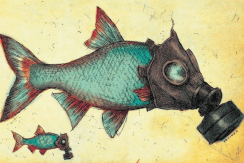
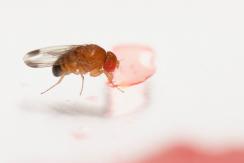
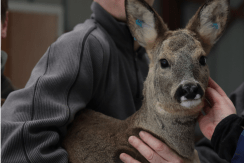
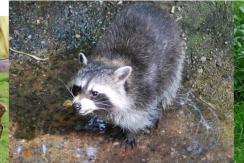
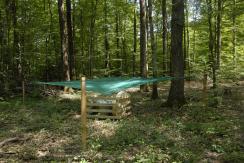
You also, comment on this article